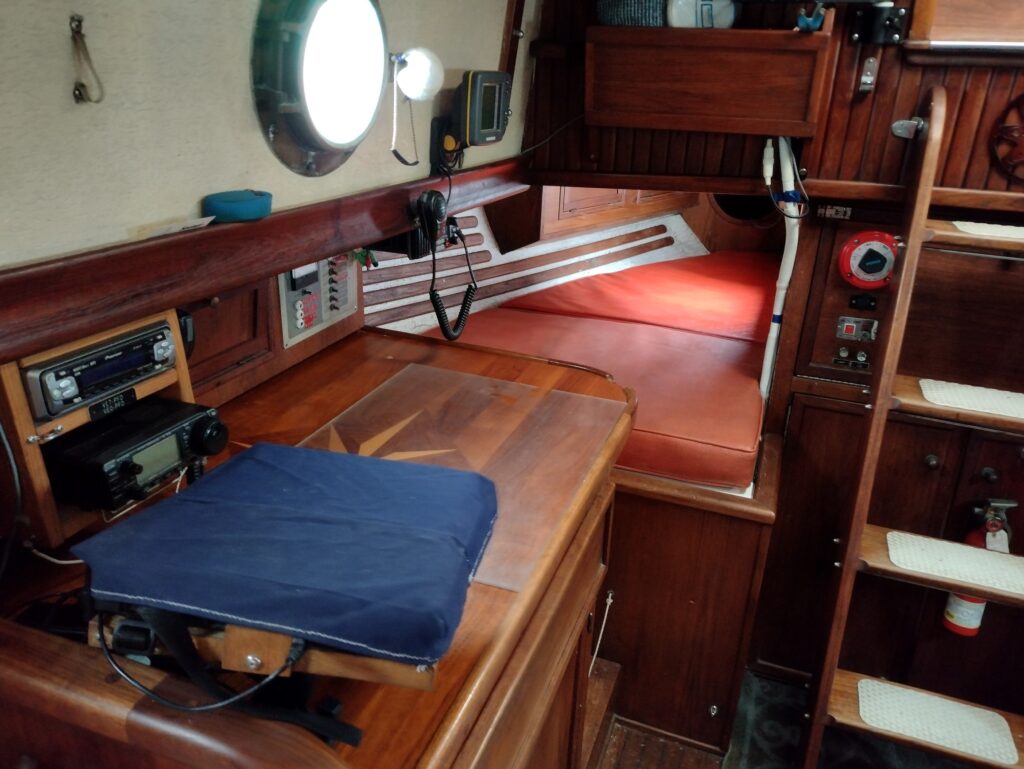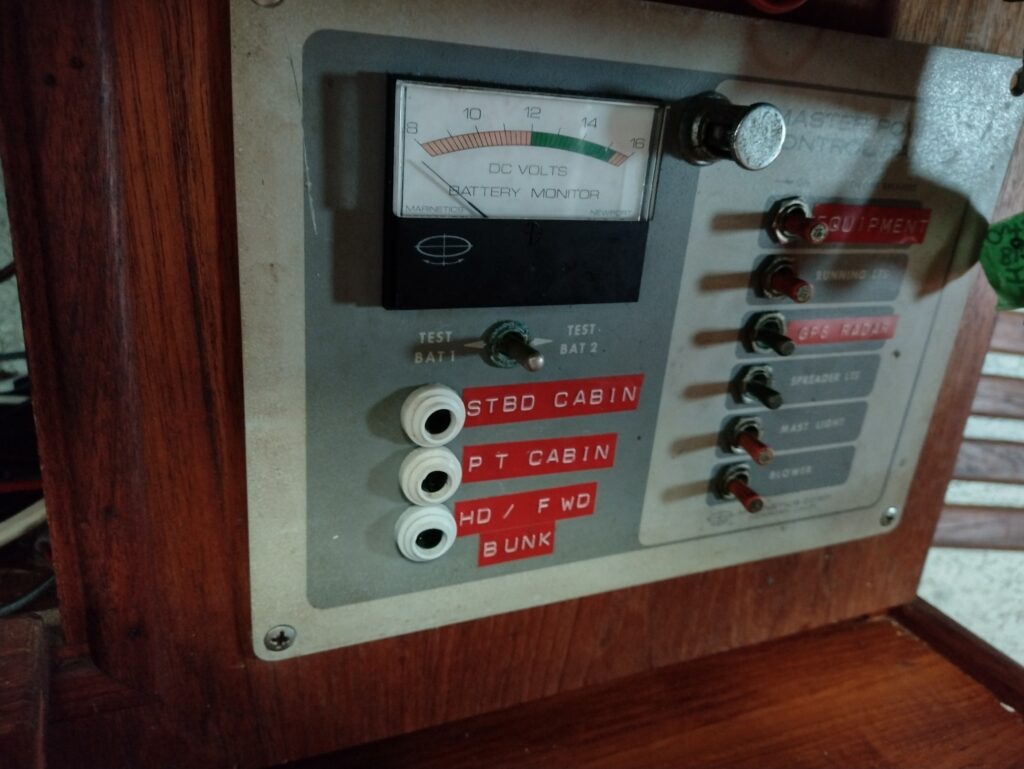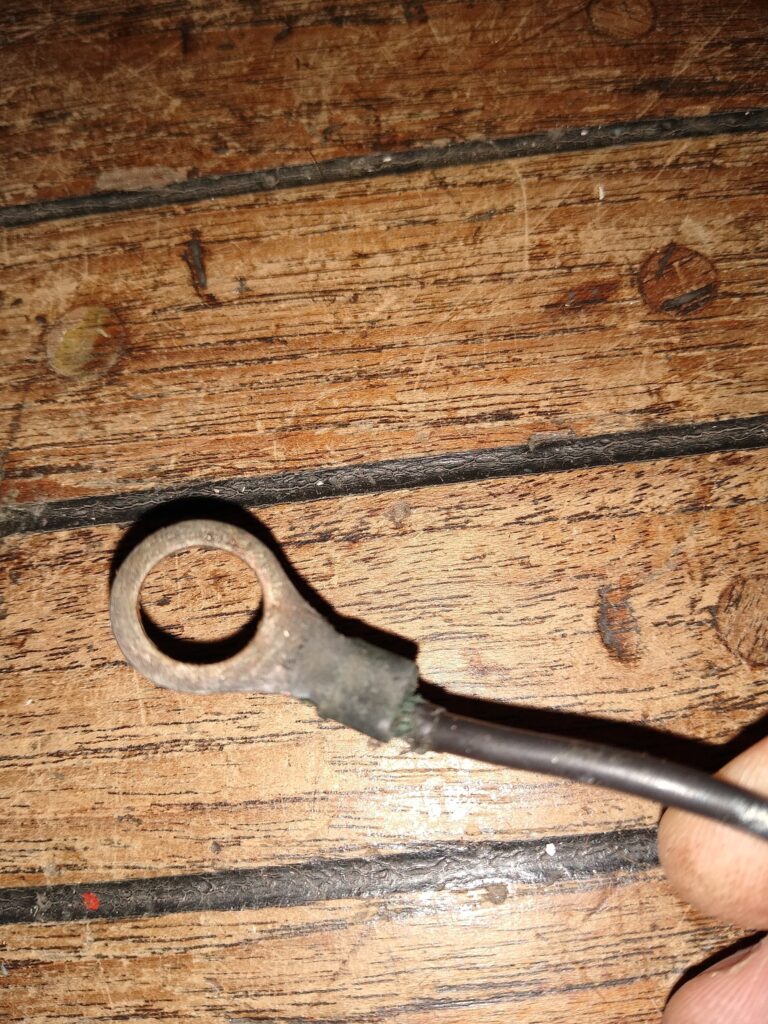So this has actually been an ongoing project over the last (checks calendar* seven?! wow) months and I’ve been putting off writing about it because I wanted the first post to be the overview and I was CONSTANTLY changing my mind and blah blah blah.
Anyway, it’s (mostly) done now and to be honest is really sick nasty (technical term) so I want to talk about it.
Firstly, the old wiring. It was pretty bad. The boat had been around the pacific (twice) and all over the PNW so it obviously worked, but it was definitely at the end of it’s lifespan and edging into bona-fide fire hazard territory.
The way she was set up was with two 8D lead acid batteries (starter and a house), positioned above the bilge in front of the engine.
Access was by a removeable floor panel under the companionway ladder.
There was one electrical panel, mounted above the chart table, which on the other side had an FM radio/CD player and an SSB, along with a mount for a laptop which was the main navigation instrument. In the picture you can also see the main 1/2/OFF switch behind the companionway ladder, plus the bilge pump switch and a few other switches. And that was pretty much it for the electrical system.
This is a closeup of the electrical panel. Not only is it really old, but almost all the labels were wrong – and in fact most of the electrical stuff didn’t actually go through it, for instance both the fridge and the water pump were wired directly into the batteries.
Obviously this wasn’t ideal for a number of reasons, some including
- the battery location meant that any corrosive fumes from the batteries would effect the engine
- water could splash up from the bilge onto the batteries
- Stuff not being wired through the panel meant I had no real way to disconnect power from various items (e.g. the fridge) without disconnect it from the battery terminal
- Likewise, it meant there was no short/breaker protection on a lot of things, which was a fire hazard.
In addition, a lot of the wiring wasn’t crimped up to modern standards, looking like this
It was even worse for the big battery cables, this was the main ground to the engine
Pretty bad.
So I ripped EVERYTHING out
I ended up being able to sell all the old battery cables and we were ready for a fresh start!







“So I ripped EVERYTHING out”…..just what I’m planning on doing myself this winter. Every time I look behind my panel….I close it back up and …sigh!
Honestly, it’s the easiest way to do it I think! Just get some snippers and start hacking away at it 😉